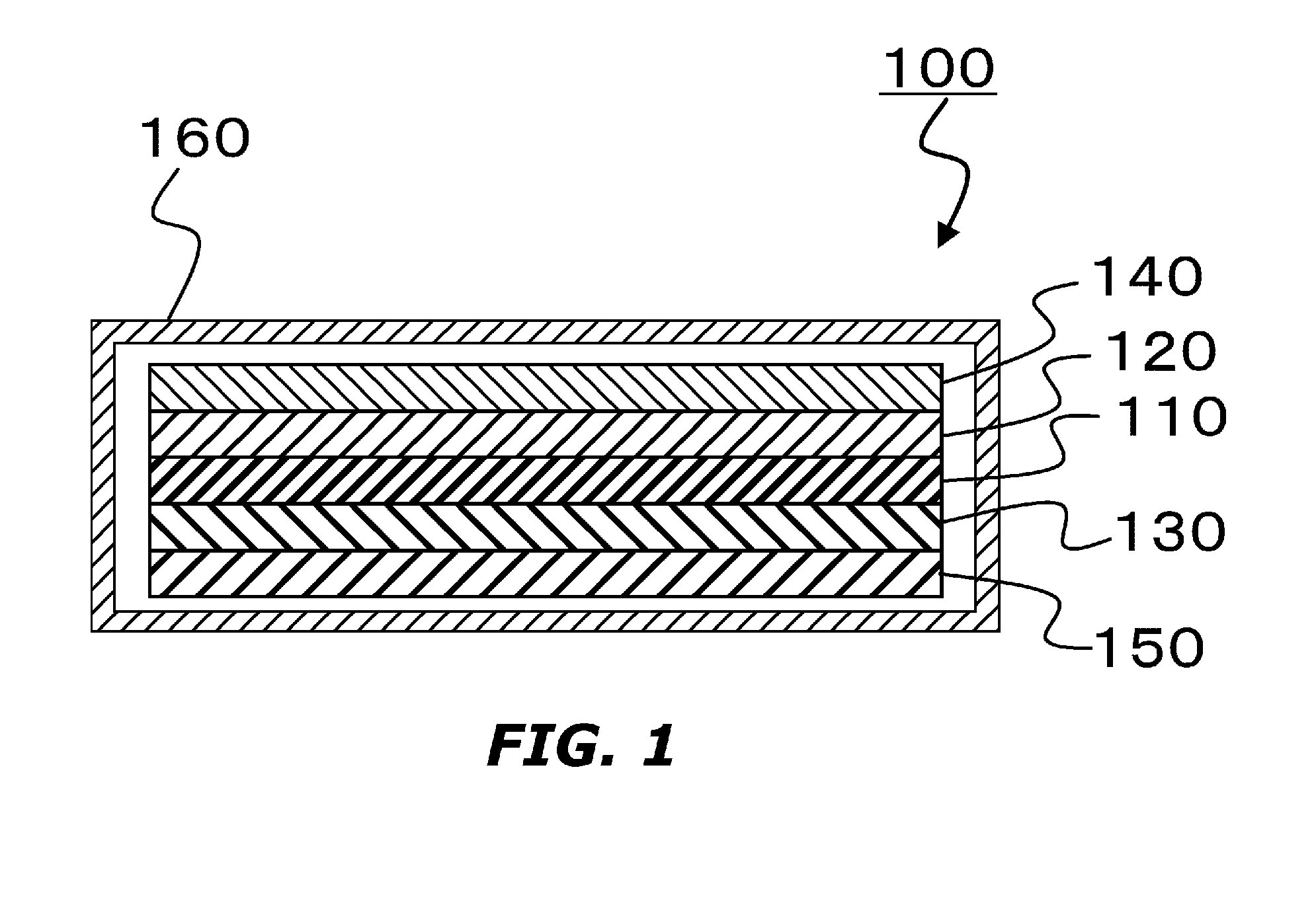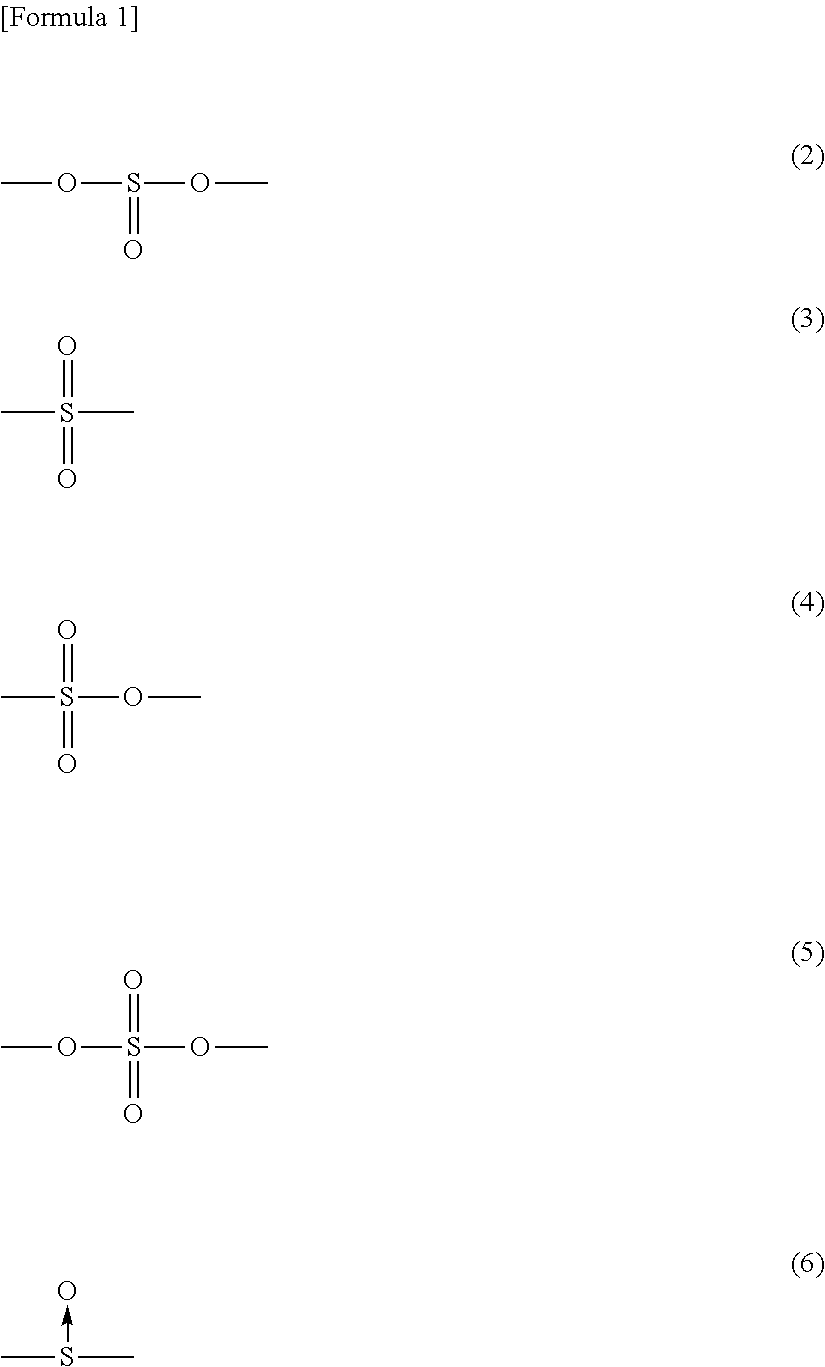Non-Aqueous Secondary Battery
a secondary battery, non-aqueous technology, applied in the direction of non-aqueous electrolyte cells, cell components, sustainable manufacturing/processing, etc., can solve the problems of affecting the charging/discharging per se, the battery will proceed to degrade, and the battery capacity will be substantially reduced, and achieve the effect of high rate performan
- Summary
- Abstract
- Description
- Claims
- Application Information
AI Technical Summary
Benefits of technology
Problems solved by technology
Method used
Image
Examples
examples
[0165]The present invention will now be described in more detail based on the following examples. However, the present invention is not limited to these examples. Further, the various characteristics of the non-aqueous secondary battery were measured and evaluated as follows.
(1) Measurement
(1-1) Non-Aqueous Electrolyte Solution Ion Conductivity Measurement
[0166]A non-aqueous electrolyte solution was prepared in a polypropylene container. The ion conductivity measurement cell “CT-57101B” (trade name) manufactured by DKK-TOA Corporation connected to the ion conductivity meter “CM-30R” (trade name) manufactured by DKK-TOA Corporation was inserted into the above container housing the non-aqueous electrolyte solution, and the ion conductivity of the non-aqueous electrolyte solution was measured at 25° C.
(1-2) Electrode Active Material Layer Basis Weight
[0167]The basis weight of the electrode active material layer was calculated by the following formula (12).
Basis weight [mg / cm2]=(Electro...
examples 25 to 33
[0238]Compact non-aqueous secondary batteries were produced based on the method described in the above (5-1) by combining the positive electrodes (P13), the negative electrode (N11), and the electrolyte solutions (S28) to (S36). An initial charging / discharging treatment was carried out on these batteries based on the method described in the above (6-1). These batteries were also subjected to the measurement described in the above (6-9). The results are shown in Table 13.
TABLE 13Rate TestElectrolyte SolutionCapacityIon ConductivityInitial ChargingRetentionNo.[mS / cm]ConditionRate [%]Example 25S2826.8(6-1)81Example 26S2942.7(6-1)87Example 27S3022.0(6-1)77Example 28S3126.3(6-1)83Example 29S3226.0(6-1)83Example 30S3328.4(6-1)74Example 31S3440.7(6-1)85Example 32S3533.9(6-1)83Example 33S3623.0(6-1)79
examples 34 to 41
[0239]Compact non-aqueous secondary batteries were produced based on the method described in the above (5-1) by combining the positive electrode (P13), the negative electrode (N11), and the electrolyte solutions (S13), (S15) to (S17), and (S37) to (S40). An initial charging / discharging treatment was carried out on these batteries based on the method described in the above (6-1) or (6-2). These batteries were also subjected to the measurement described in the above (6-9) and (6-10). The results are shown in Table 14.
PUM
| Property | Measurement | Unit |
|---|---|---|
| ion conductivity | aaaaa | aaaaa |
| ion conductivity | aaaaa | aaaaa |
| porosity | aaaaa | aaaaa |
Abstract
Description
Claims
Application Information
 Login to View More
Login to View More - R&D
- Intellectual Property
- Life Sciences
- Materials
- Tech Scout
- Unparalleled Data Quality
- Higher Quality Content
- 60% Fewer Hallucinations
Browse by: Latest US Patents, China's latest patents, Technical Efficacy Thesaurus, Application Domain, Technology Topic, Popular Technical Reports.
© 2025 PatSnap. All rights reserved.Legal|Privacy policy|Modern Slavery Act Transparency Statement|Sitemap|About US| Contact US: help@patsnap.com



